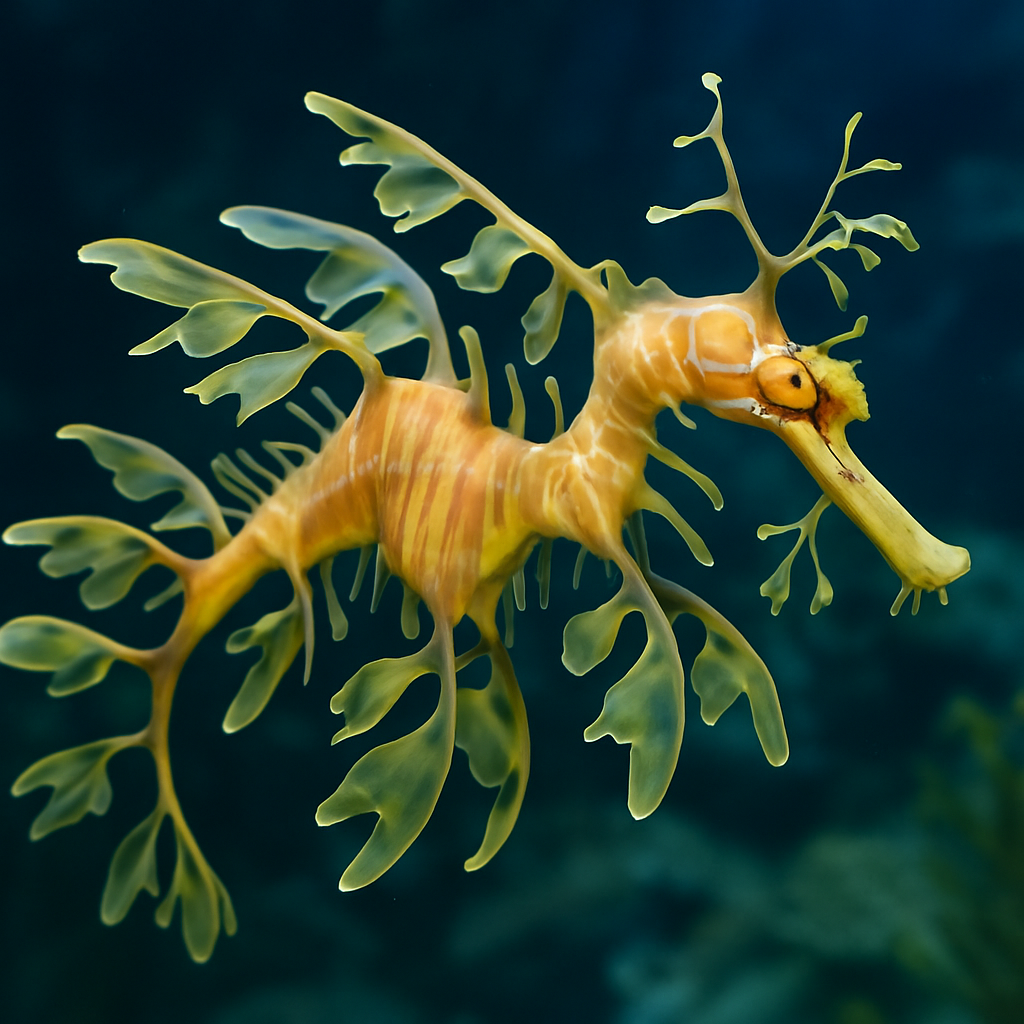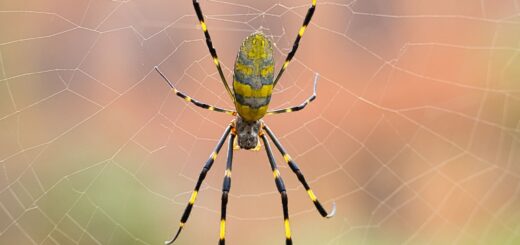The Fascinating Leafy Sea Dragon: Nature’s Masterpiece of Camouflage
The Leafy Sea Dragon, known scientifically as Phycodurus eques, is one of the most mesmerizing creatures in the ocean. Native to the waters off the southern and western coasts of Australia, this marine wonder is often described as nature’s underwater masterpiece. With its delicate, leaf-like appendages and unique coloration, it resembles a floating piece of aquatic foliage. But beyond its beauty, the Leafy Sea Dragon is a marvel of evolutionary adaptation, perfectly equipped to survive in its environment.

In this article, we will dive into the fascinating world of the Leafy Sea Dragon, exploring its distinctive features, behavior, habitat, and the conservation efforts aimed at protecting this extraordinary species.
What is a Leafy Sea Dragon?
The Leafy Sea Dragon is a type of seahorse, belonging to the Syngnathidae family. It is easily recognizable due to its leaf-like projections along its body, which are actually modified fins. These projections help the Leafy Sea Dragon blend seamlessly with the seaweed and kelp in its environment, providing an unparalleled level of camouflage.
While it might look like an underwater plant, the Leafy Sea Dragon is a living creature with a fascinating set of behaviors and biological features. Unlike most fish, the Leafy Sea Dragon does not have the ability to swim very fast or efficiently. Instead, it uses its small dorsal fin, located at the top of its body, for slow, controlled movements. This deliberate pace further helps it stay hidden among the seaweed and vegetation, avoiding predators.
Physical Features of the Leafy Sea Dragon
The Leafy Sea Dragon’s appearance is its most striking feature. It can grow up to 35 centimeters (14 inches) in length, with a body that is adorned by long, leafy appendages extending from its back, sides, and tail. These leaf-like structures are not true leaves but are actually long, thin fins that give the creature its leafy appearance.
The body of the Leafy Sea Dragon is covered in hard, bony plates, providing protection from predators. Its coloration varies from pale yellow to greenish hues, perfectly matching the algae and seaweed in its natural habitat. The tail of the Leafy Sea Dragon is prehensile, allowing it to grasp onto plants for stability while drifting in the current.
One of the most remarkable aspects of its appearance is its snout. Much like its close relative, the seahorse, the Leafy Sea Dragon has a long, tubular snout that it uses to suck up tiny prey such as plankton and small crustaceans. This feeding method is similar to a vacuum cleaner, drawing in food without the need to chase it.
Habitat and Distribution
Leafy Sea Dragons are found exclusively in the temperate waters of southern and western Australia. They inhabit coastal regions with abundant kelp forests, seagrass meadows, and rocky reefs. These environments offer plenty of shelter and food, making them ideal for the Leafy Sea Dragon’s slow-moving, ambush feeding style.
The depth at which they live typically ranges from 1 to 50 meters (3 to 164 feet), though they are most commonly found in shallower waters. These delicate creatures are not known to migrate far and prefer to stay within their familiar habitats, where the vegetation provides both camouflage and nourishment.
Diet and Feeding Behavior
The diet of the Leafy Sea Dragon primarily consists of small crustaceans, plankton, and tiny fish larvae. Using their tubular snout, they slowly suck up their prey, much like other members of the seahorse family. Their slow, almost imperceptible movement in the water makes them excellent hunters, able to remain hidden while waiting for their food to come close.
Their feeding technique is incredibly efficient, but it is also reliant on their ability to remain camouflaged. If disturbed or threatened, the Leafy Sea Dragon may retreat into the dense vegetation, relying on its camouflage to stay safe.
Reproduction and Life Cycle
The reproduction process of the Leafy Sea Dragon is similar to that of its seahorse relatives. However, unlike most species, where the female lays eggs, in Leafy Sea Dragons, the male carries the eggs. During mating season, the female transfers her eggs into a special brood patch on the male’s tail, where they are fertilized and incubated.
After about 4 to 6 weeks, the male gives birth to miniature versions of the adults, which resemble the fully grown Leafy Sea Dragon, but on a much smaller scale. These young are fully formed and capable of swimming immediately after birth. This reproductive process ensures that the young are well-equipped to begin their lives in the protection of the kelp forests.
Conservation Status
The Leafy Sea Dragon is classified as Near Threatened on the International Union for Conservation of Nature (IUCN) Red List. While they are not yet endangered, their population is declining due to several factors, including habitat loss, illegal collection, and environmental changes caused by pollution and climate change.
Their unique appearance has made them a target for the aquarium trade, leading to illegal capture and trade in some areas. To combat this, Australia has implemented strict regulations that prohibit the collection of Leafy Sea Dragons from the wild. In addition, marine reserves and protected areas have been established to ensure the preservation of their natural habitat.
Interesting Facts about the Leafy Sea Dragon
- The Leafy Sea Dragon is often mistaken for seaweed due to its incredible camouflage.
- Unlike most fish, they do not have teeth or a stomach, which means they must feed continuously to survive.
- The Leafy Sea Dragon has a short lifespan, typically living up to 5 to 7 years in the wild.
- Their closest relatives are the seahorses, and both species belong to the same family, Syngnathidae.
- The Leafy Sea Dragon is a symbol of South Australia and is featured on the state’s license plates and as part of local tourism initiatives.
Conclusion
The Leafy Sea Dragon is one of nature’s most extraordinary creatures, both in terms of appearance and adaptation. Its slow movements, beautiful camouflage, and unique biological features make it a true wonder of the underwater world. However, due to threats like habitat destruction and illegal trade, its future remains uncertain. Conservation efforts are crucial in ensuring that future generations can continue to admire and learn from these remarkable creatures. As a symbol of Australia’s unique marine life, the Leafy Sea Dragon deserves our attention and protection for years to come.








